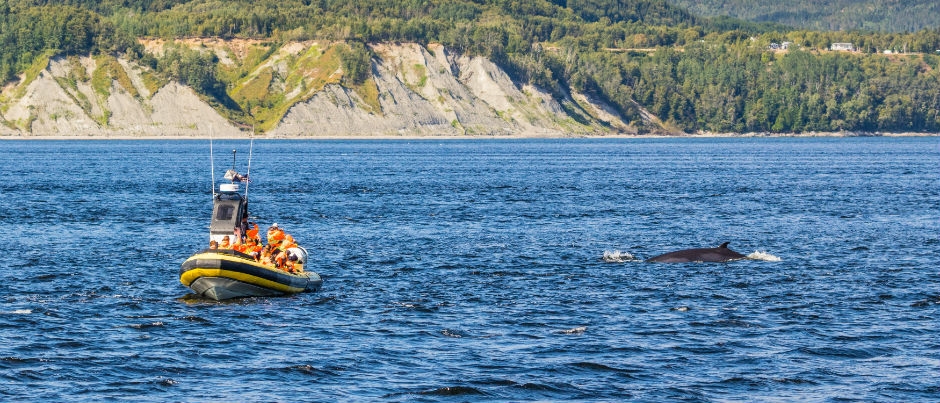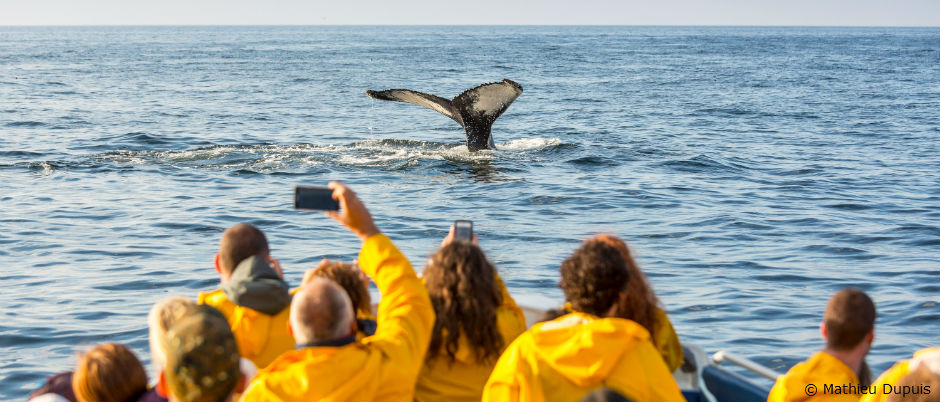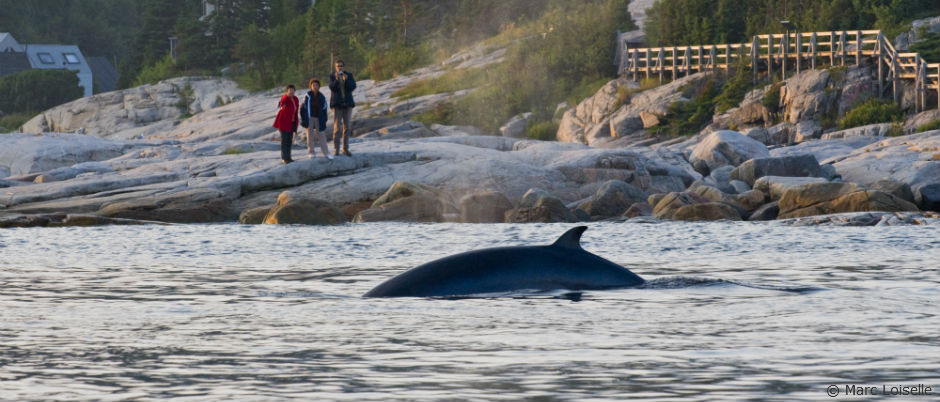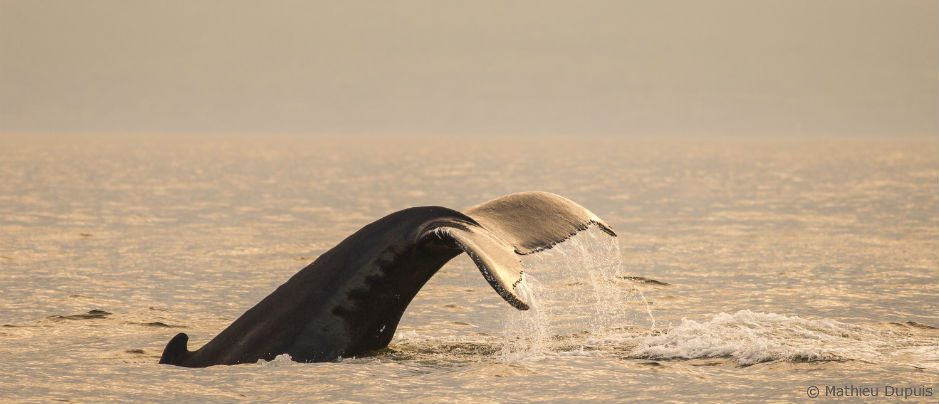The Québec maritime Blog

- Mathieu Dupuis
What to Expect When Whale Watching in Eastern Québec
“At what time can I see the whales?” I always want to giggle when someone asks me this question, since there’s no timetable for observing whales in the St. Lawrence. Visitors to Côte-Nord, Gaspésie or Bas-Saint-Laurent can go whale watching from June to October, but it’s impossible to predict what you’ll see: the number of whale sightings during any given observation period will vary. It’s even possible for a scientific research team to spend a whole day on the water and not see a single whale! But what a thrill when you do see a whale blow!
What should you expect, then?

What should you expect while whale watching? Anything and everything! The best way to fully enjoy your whale-watching experience is to have no specific expectations and just enjoy whatever happens.
Keep in mind that the ads for whale watching that you see on TV or in brochures don’t always reflect reality: the images they contain have often required hours of shooting!
As a rule, you will observe whales on the move. Depending on the size of the animal, you may see its blow. Then you’ll see its back and dorsal fin emerge from the water. The whale may take several breaths before diving below the surface again. Will you see its tail? Not necessarily. Only humpbacks consistently lift their tails out of the water before a deep dive. Some blue whales and belugas do as well, but not all.
Whales may also leap out of the water, which is called breaching. Humpbacks and minke whales may breach, but it’s not frequent behaviour. If you see a whale breaching, count yourself lucky, since this is such a rare occurrence!
In Côte-Nord, you’re most likely to see minke whales, while humpbacks are seen most frequently in Gaspésie. However, the presence and number of individual whales vary from year to year, as well as from month to month and even from day to day. In other words, it’s best to have no expectations—and be ready for anything!
A different experience every time

I remember a day when I was sitting on the rocks by the water in Les Bergeronnes and identified six different species of whales, while the next day I saw none. All boat captains will agree: no two whale-watching excursions are the same. In a few minutes, the situation on the water can change completely, as can the weather and visibility. From floating on completely calm waters without a whale or seal in sight, you can suddenly find yourself surrounded by feasting marine mammals and seabirds!
How close you will get to the whales is very variable as well. But even from a distance, watching these majestic animals is a magical experience. The sounds of their blows, the smell of the sea air and the excitement of spotting a giant emerge from the water—all of these elements will make your encounter with the whales a unique and unforgettable experience!
Each sighting leads to more questions…

Even after years of whale watching, I have new questions every time I see another whale. This is why researchers continue to study these fascinating animals! To make the most of your whale-watching experience, you may want to learn some of the basics of whale anatomy and behaviour beforehand. Another option is to participate in an activity with a naturalist guide who can answer your questions about the somewhat mysterious behaviour of these marine mammals.
With a bit of patience and vigilance (you’ll want to keep scanning the water so you don’t miss anything!), you won’t be disappointed in your whale-watching experience. For more information, read these whale-watching tips from the experts!

(0) comment